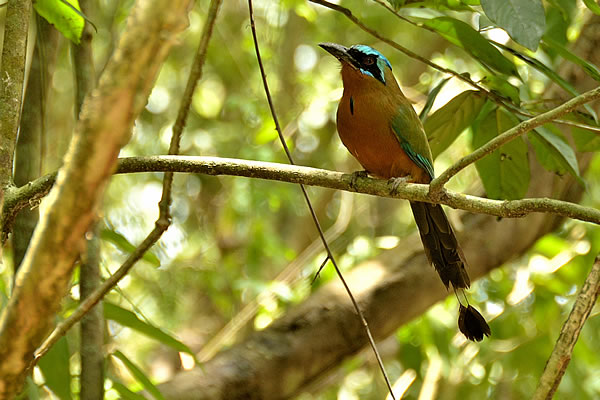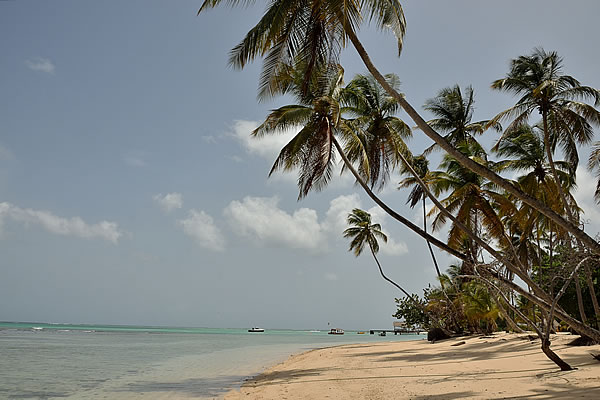English | Dutch |
|
| Trinidad & Tobago: underexplored and uncontrived | |
Miami (USA), May 1st 2015
|
|
| |
|
Trinidad & Tobago was our last stop on our trip to some of the Lesser Antillean islands in the southern part of the Caribbean Sea. This relatively underexplored and uncontrived destination is actually more South American than Caribbean. And that’s what the local people are eager to tell you. You will hear it a lot of times. The islands of Trinidad and Tobago were once part of the South American landmass and that’s proven by the type of birds you see here. The birds on Trinidad and Tobago are much more South American than Caribbean. We started our trip to the islands on Trinidad for a few days. Afterwards we went for five days to Tobago after which we flew back to Trinidad for a few days, before heading off to Florida in the US. Trinidad and Tobago is by far the biggest country in this part of the Caribbean and also the most influential and divers. In contrast to many of the small islands in the area, Trinidad and Tobago did not hand itself over to the tourist trade. This has a lot to do with the huge oil and natural gas reserves. But also the small local industries seem to thrive. Many of the products you can buy in the Caribbean nations are produced in Trinidad and Tobago. The “Trinbagonians”, as the inhabitants of Trinidad and Tobago are often called, are busy with their daily life. Mass tourism is not on the radar yet and that makes the country pleasant and authentic. You seldom have the feeling to get strangled in the tourism industry. You will see some tourists on Tobago, but only a few on Trinidad. |
|
 |
|
A hike in the Asa Wright Reserve in northern Trinidad |
|
The Trinbagonians are proud and confident people. The 1.3 million inhabitants have different ethnic backgrounds; from African to Indian, and from Syrian to European. And they are proud of this diverse background. They love to tell you that the multicultural society is working in Trinidad and Tobago. “We just respect each other and don’t bother with each other’s business” is what we heard several times. However, reality is probably a little bit different. There are inevitably ethnic tensions is this country. There are also some safety issues in Trinidad and Tobago. The tourist brochures will tell you that Trinidad and Tobago have no bigger issues than many other places in the world, but the same brochure also advises you to stay inside after dark and to visit more remote areas in a group. The murder of an elderly German couple in November 2014 on a beach on Tobago, probably ‘forced’ the government to warn tourists about the safety in the country. The capital of the country is Port of Spain on Trinidad. This is a good base to visit other interesting areas on the island. Big buses and so called maxi taxis (minivans or coasters) depart regularly to all parts of the island. For some of the destinations in the south you have to change buses in San Fernando, the second city on the island. But most travellers stay in the northern part of the island. This is where the ‘northern range’ is with great hiking and birdwatching opportunities. It is not very difficult to see the Toucan, Motmot, Jacamar and many species of hummingbirds. The beaches are great for sunbathing and swimming, but some of them are also good spots to see the nesting of the leatherback turtles. And last but not least, Trinidad is also one of the best places in the world to celebrate Carnival. But also outside the carnival season, Trinidad is a great place to party. There is always a dancing opportunity around to move your hips. | |
 |
|
The spectacular Trinidad Motmot |
|
Tobago is the little quiet brother of Trinidad. The island is much smaller and has only a fraction of the number of inhabitants. Tobago is also much more depending on tourism dollars. The islands are only a 20 minute flight from each other. And outside the tourist season, it is not difficult to get a seat on one of the many daily flight between the islands. And for those who do not like to fly, the ferry is a good and pleasant option. Most travellers go to Tobago for the beach, sea and tropical rainforest. The forest in the heart of the island teems with tropical birds and the diving around the island is world class. Many people think that Tobago is safer than Trinidad, but we are not so sure about that. The fact that most tourists are on Tobago, probably attracts the bad guys to this place. Public transport on Tobago is more complex than on Trinidad. There are only a few buses and for that reason people use so-called route-taxis. Route-taxis are normal cars that drive a fixed route and are shared by up to four passengers (excluding the driver). The problem is that there are no signs on the window, which means that you have to hail every car and ask the driver if he is heading your direction. If you want to go to the more remote areas, you probably have to go through Scarborough (main town on Tobago) where you have to change cars. And to make it even more complex. The route-taxis do not depart from a central station in Scarborough. Ask around for the right place to get one. When we came back to Trinidad, we decided to hire a car for a few days. A car makes you much more flexible to visit the more remote area. We also did want to do some early-morning birding, and also then a car is advisable. Rental cars aren’t expensive, but remember that you have to drive on the left side of the road in Trinidad and Tobago. We experienced Trinidad and Tobago as an interesting and pleasant country. The fact that the country isn’t overrun yet by tourists, keeps it authentic. And for beach loving people, Trinidad and Tobago also offer this, besides loads of other things. This makes the country a top-destination in the area for individual travellers who like to experience more than resort-life and are seeking for a mix between Latin and Caribbean culture. |
|
 |
|
Colourful stall in Port of Spain |
|
 |
|
Crown Point Beach on Tobago |
|
 |
|
A curious Crested Oropendola |
|
 |
|
The Caroni Swamp on Trinidad |
|
 |
|
The east-coast highway on Trinidad |
|